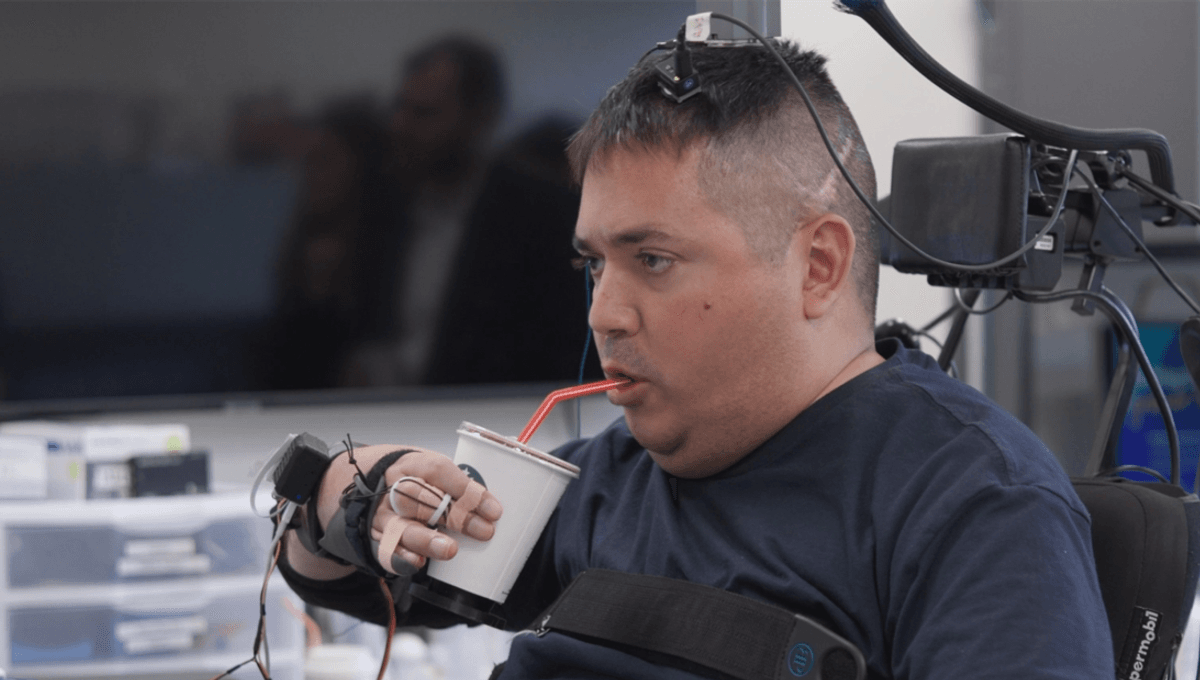
In 2023, a first-of-its-kind clinical trial used a brain implant and artificial intelligence (AI) to return movement and sensation to a man with quadriplegia. Now, a year on, it’s been announced that he can once again feel the fur of his family dog, Bow.
The pathways that connect the brain and body were severed when Keith Thomas was injured in 2020, in a way that affected the C4 and C5 vertebrae of his spine. Injuries this high up can cause quadriplegia and tetraplegia, patterns of paralysis that affect the hands, arms, torso and legs, bladder and bowel function, and respiratory function.
To try and restore some functionality, engineers and surgeons at Northwell Health’s The Feinstein Institutes for Medical Research explored a new and groundbreaking approach. It involved performing a double neural bypass to implant a chip, effectively acting as an electronic bridge that reconnected his brain, spinal cord, and body so that information could flow freely.
“This is the first time the brain, body and spinal cord have been linked together electronically in a paralyzed human to restore lasting movement and sensation,” said Chad Bouton, professor in the Institute of Bioelectronic Medicine at the Feinstein Institutes, vice president of advanced engineering at Northwell Health, developer of the technology, and principal investigator of the clinical trial, in a statement.
“When the study participant thinks about moving his arm or hand, we ‘supercharge’ his spinal cord and stimulate his brain and muscles to help rebuild connections, provide sensory feedback, and promote recovery. This type of thought-driven therapy is a game-changer. Our goal is to use this technology one day to give people living with paralysis the ability to live fuller, more independent lives.”
A year on, and the researchers at the Feinstein Institutes for Medical Research at Northwell Health have announced that Thomas continues to make remarkable progress.
“Today, Keith can extend his arm to pick up a cup, grasp it and take a drink using only his thoughts and stimulation,” reads the release. “Additionally, Keith has regained even more sensation in his wrist and arm outside of the lab too (without the computer connected to his skull). He can even feel the fur of his family’s pet dog, Bow. Not long ago, Keith could only lift his arms about an inch, and now he can wipe his face!”
It’s hoped that Thomas’s progress will continue and potentially one day enable him to drive a motorized wheelchair without assistance. It’s a testament to Thomas’s powerful words when the success of the brain implant was first announced in 2023: “The only thing I want to do is to help others. That’s always been the thing I’m best at. If this can help someone even more than it’s helped me somewhere down the line, it’s all worth it.”
Source Link: Paralyzed Man With World-First Brain Implant Can Feel His Dog's Fur Again